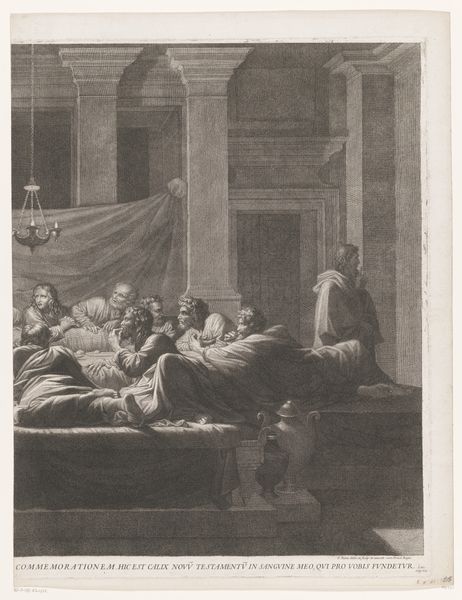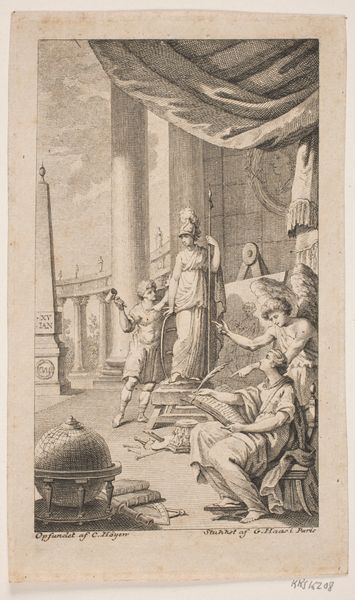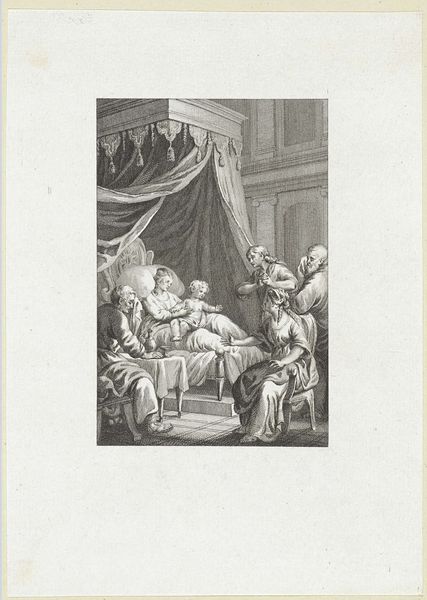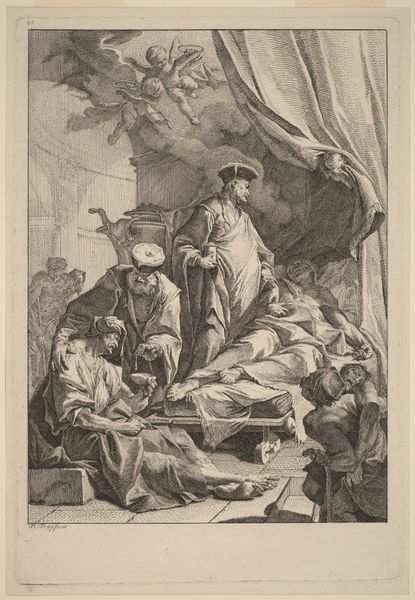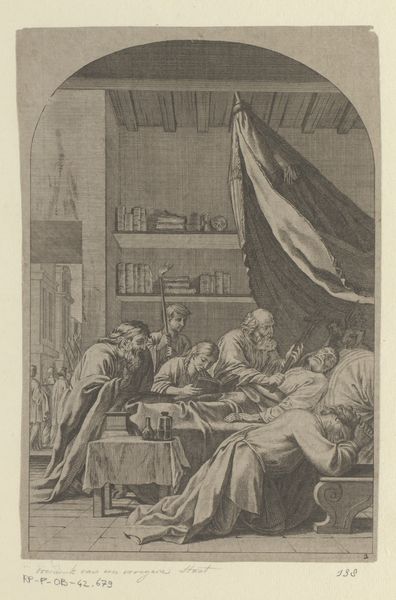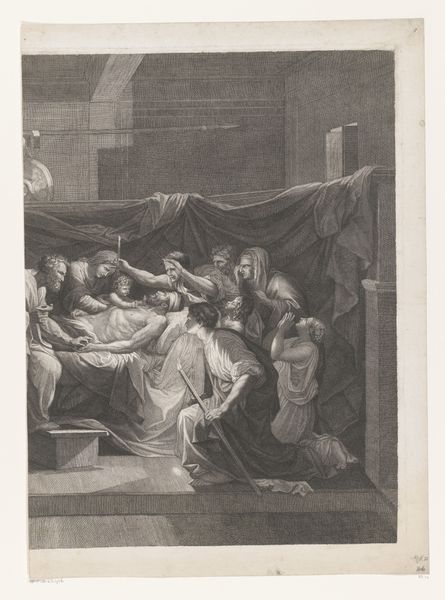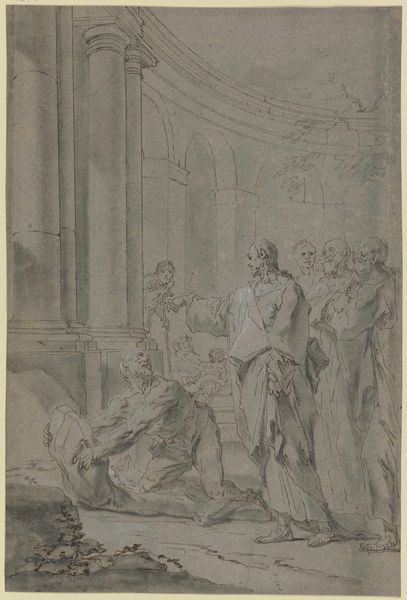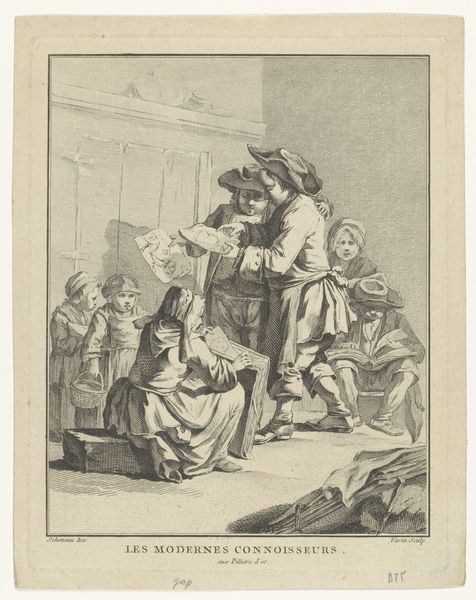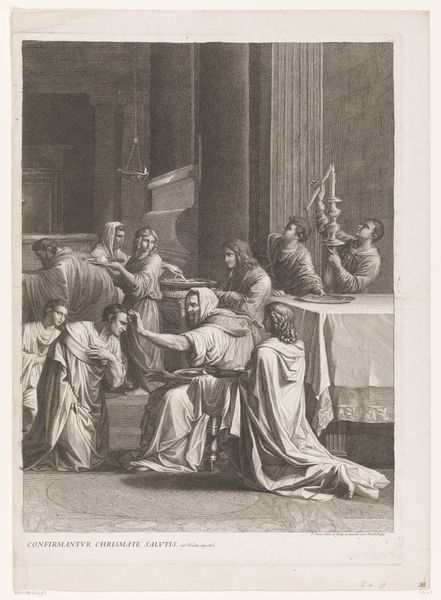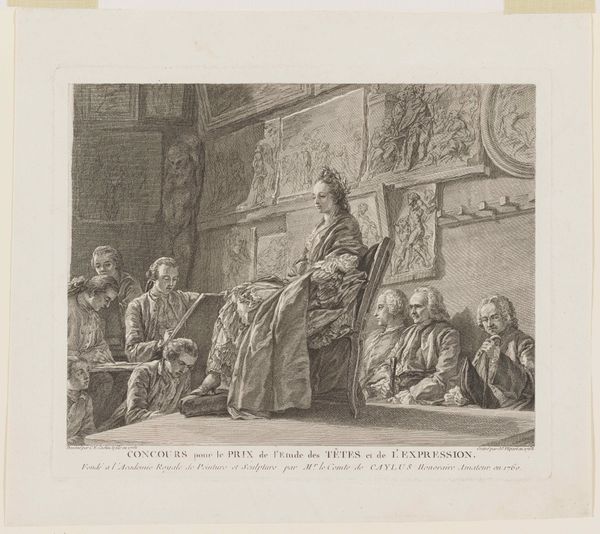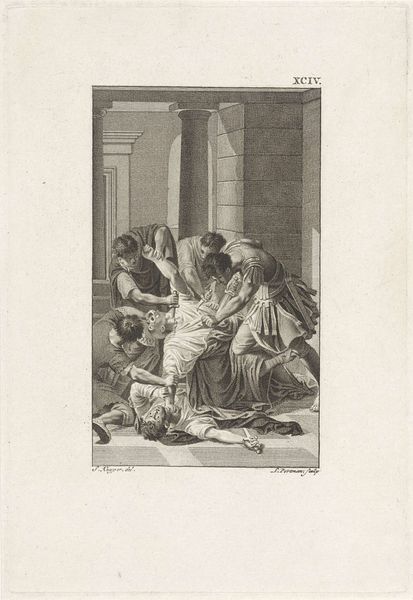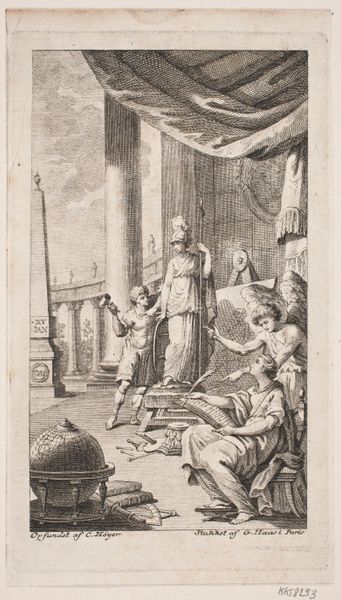
engraving
#
baroque
#
old engraving style
#
line
#
history-painting
#
engraving
Dimensions: height 591 mm, width 420 mm
Copyright: Rijks Museum: Open Domain
Curator: Let’s discuss this fascinating engraving, Laatste Avondmaal (linker deel), or "Last Supper (left part)," made sometime between 1633 and 1700. It’s currently held at the Rijksmuseum and created by Jean Pesne. Editor: My immediate impression is one of hushed solemnity. The stark line work and muted greyscale amplify the gravity of the depicted scene, evoking a moment fraught with tension and spiritual significance. Curator: Indeed. This scene captures the moment Christ shares the Last Supper with his disciples. However, looking at this today, I am compelled to question the gender dynamics, which excludes women completely from partaking in what became a cornerstone of Christian practice. Editor: That's a powerful observation. Jean Pesne obviously made choices on this scene of what was appropriate representation at the time, echoing traditional interpretations and power structures. The men here, bathed in dramatic lighting, symbolize faith and lineage in that religious system. Curator: It’s true. Furthermore, this isn't just a depiction of a religious moment; it's an interpretation framed by cultural biases. Even the architecture suggests a hierarchical structuring. Editor: The formal structure with pillars and linear design emphasizes that structure. Baroque as a movement in visual arts employed just these symbols and it's definitely on display here! The stark contrast between light and shadow, another baroque trait, focuses our attention on central figures but can create stark contrasts, obscuring alternative narratives and subjugating marginalized ones. Curator: Which forces us to ask: Whose stories are deemed important, and whose are erased? Editor: Right, this piece makes me wonder how institutions like the Rijksmuseum contribute to shaping our collective memory, sometimes enshrining traditional hierarchies and often shaping what is valuable and valued about an image in how it is collected and presented. Curator: Precisely! By examining it, we can reveal the ideological underpinnings that dictate art’s place within cultural discourse. Editor: Absolutely, this engraving provides a glimpse into history, reminding us that our understanding of such pieces must continue through critical and multifaceted dialogue.
Comments
No comments
Be the first to comment and join the conversation on the ultimate creative platform.
